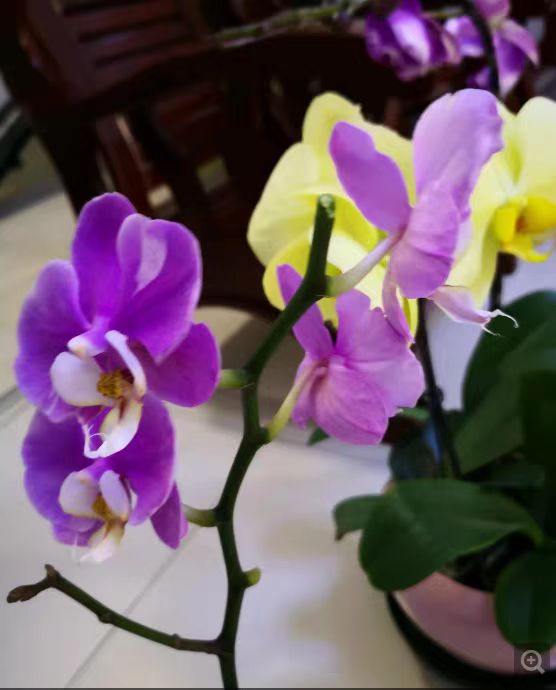During the cultivation of Phalaenopsis orchids, fertilization is a crucial step. If the fertilization is insufficient, the impact on the Phalaenopsis orchid cannot be underestimated, and it will seriously impede its normal growth.
In terms of appearance, the most intuitive manifestation of an under-fertilized Phalaenopsis orchid is the poor condition of its leaves. Under normal circumstances, the leaves of a healthy Phalaenopsis orchid are thick, plump, glossy, and bright green in color. However, when the fertilizer supply is insufficient, the leaves will gradually lose their vitality. The leaves become thin and soft, lacking toughness, and you can clearly feel the deteriorated texture when touching them. The color of the leaves is no longer bright, and they start to turn yellow. There may even be a phenomenon of yellowing that spreads from the leaf tips to the leaf bases. This not only affects the ornamental value of the Phalaenopsis orchid but also serves as an obvious signal that its growth is being hindered.
Regarding the growth of the plant, insufficient fertilization will cause the Phalaenopsis orchid to grow slowly. Due to the lack of key nutrients such as nitrogen, phosphorus, and potassium, the plant cannot synthesize enough organic substances to support its own growth. It is difficult for new leaves to sprout, and even if new leaves do emerge, they are very small and thin, and it is hard for them to unfurl. The development of the root system is also inhibited. The number of roots decreases, and the roots are thin and weak, unable to penetrate deeply into the substrate to absorb water and nutrients. This makes the entire Phalaenopsis orchid plant short and the stem thin and weak, making it difficult to support the lush leaves and flowers. Problems such as lodging are likely to occur during the growth process.
The flowering period is an important time to check the growth status of the Phalaenopsis orchid, and the impact of insufficient fertilization on the flowering period is particularly significant. The formation of flower buds in Phalaenopsis orchids requires sufficient elements such as phosphorus and potassium. If the fertilization is insufficient, the differentiation of flower buds will be inhibited, and it will be difficult to form flower buds. Even if a small number of flower buds are formed, due to the lack of nutrients, the flower buds may develop poorly, with small and few flower buds. During the blooming stage of the flowers, due to the insufficient supply of nutrients, the flowers cannot fully bloom. The petals are thin and small, the flower color is dull, and the Phalaenopsis orchid loses its due beauty and elegance. Moreover, the lifespan of the flowers will be greatly shortened, and they will wither in advance, significantly reducing the ornamental period.
Long-term insufficient fertilization will also seriously weaken the resistance of the Phalaenopsis orchid. A plant lacking nutrients is like a person who is weak and prone to illness, with extremely poor resistance to pests and diseases. It is vulnerable to the attacks of pests such as spider mites and aphids, and it is also more likely to be infected with diseases caused by fungi and bacteria, such as leaf spot disease and soft rot disease. Once infected with pests and diseases, due to the poor growth of the plant itself and its weak recovery ability, the condition is likely to deteriorate rapidly, and it may even endanger the life of the Phalaenopsis orchid.
Insufficient fertilization of Phalaenopsis orchids causes harm to their growth in many aspects. From the leaves and the plant itself to the flowering period, and then to the plant's resistance, all will be seriously hindered. Therefore, during the cultivation of Phalaenopsis orchids, the fertilization process must be taken seriously. According to the different growth stages of the Phalaenopsis orchid, fertilize scientifically and rationally to provide it with sufficient nutrients.
What happens if a Phalaenopsis orchid is under-fertilized?

Share with
Tagged in :




Leave a Reply